Add Energy Demands
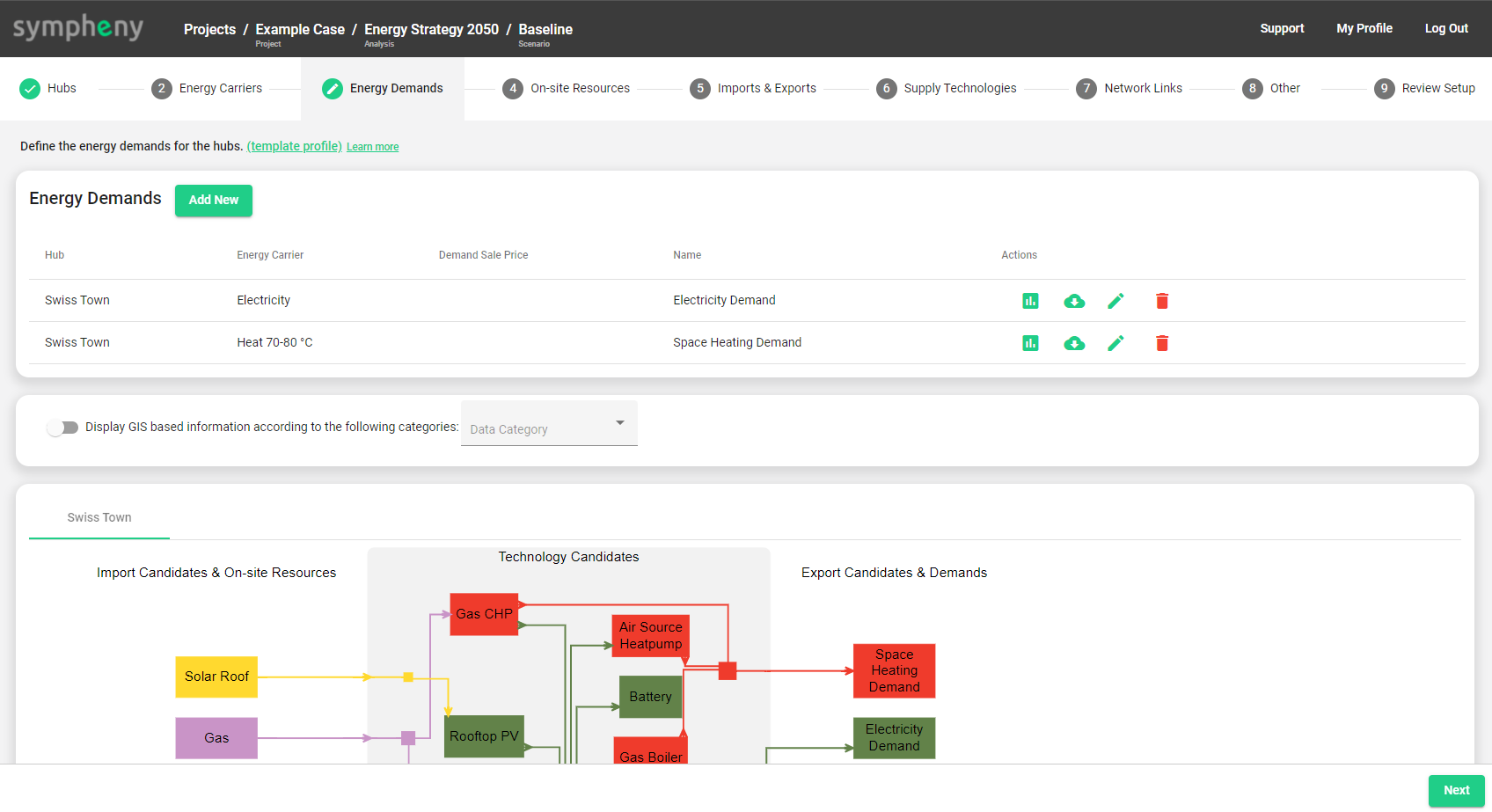
In this step, Energy Demand profiles for each Hub are specified. Multiple energy demand profiles for any given Hub can be defined. A demand profile for a hub must be specified with a time resolution of 1 hour and a time span of 1 year (365 days), consisting of 8760 values. Demand profiles are specified in kWh per hour (kWh/h). For the optimization, the demand profiles are aggregated in typical days (see section AI clustered profiles).
Add a New demand
→ Add New: Select the Hub where the demand profile is located and the corresponding Energy Carrier. Optionally, a Name for the demand profile (e.g. space heating demand) can be specified as well as a Demand Sale Price. The Demand Sale Price generates an income to the system when the corresponding demand is supplied, i.e. this models the sale of the respective energy carrier to the customer and is specified in CHF/kWh.
The energy demand profiles for a site may be specified in 3 ways (detailed in the sections below):
Generate Profile: select a profile from our in-house database
Upload New: upload your own excel profile
Select saved: select a profile from your personal database
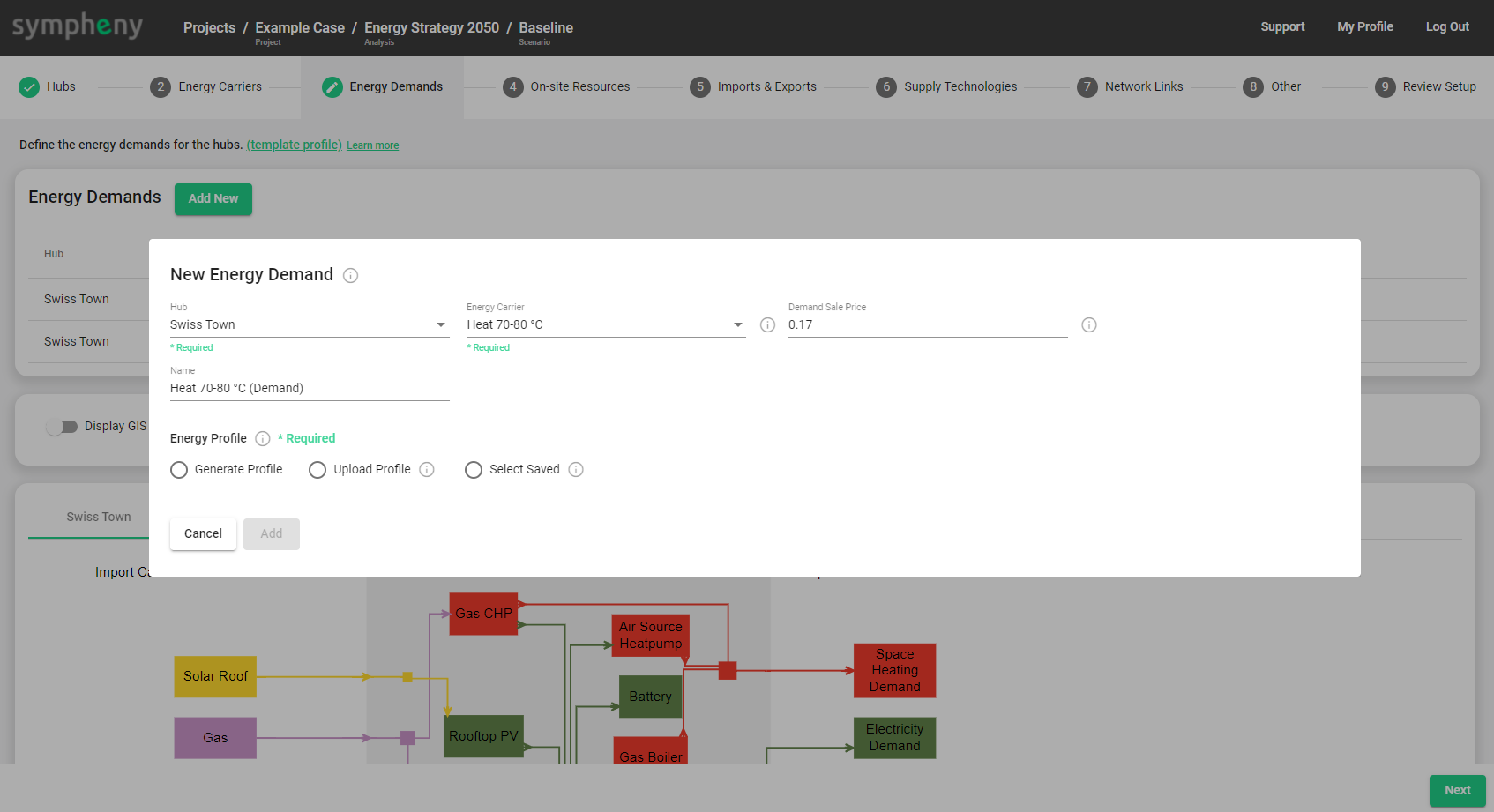
Tip: Multiple energy demand profiles for any given Hub – Energy Carrier combination may be specified. In execution of the optimization, all demand profiles for a given Hub – Energy Carrier combination are aggregated.
→ Generate Profile
Generate standard hourly energy demand profiles for buildings of different types. After clicking on the Generate Profile button, a box will open where you can specify the parameters of the profile to be generated. You must select:
Demand Type (e.g. Electricity, Hot Water)
Building Use (e.g. Residential, Office)
Building Age or Standard (kWh/m2 associated)
Energy Reference Area (m2)
Alternatively to specifying the Building Age or Standard, you can specify the Energy Intensity (kWh/m2/year) or Total Annual Demand (kWh/year) directly. After making the parameter selections, a statistical summary of the demand profile is shown below, including the source of the data used to generate the profile (for more information on the boundary conditions of these typical profiles, consult this page). The profile associated with your Demand Type - Building Use selection will be scaled to fulfill the Energy Intensity or Total Annual Demand specified. By clicking Next in the box, the profile is generated and you are given the option to add the profile to your scenario.
→ Upload New
An energy demand profile may be specified in a XLSX file and uploaded. The profile should be specified in kWh and for every hour of the year from the 1st of January to the 31st of December. The maximum size of the XLSX file is 2 MB. The file should consist of a single sheet, containing 2 columns, no header, and exactly 8760 rows. Empty values, if any, must be replaced by 0. The 1st column contains the index (incrementing integers from 1 to 8760). The 2nd column contains the values corresponding to the hourly energy demand in kWh, as shown below, (TEMPLATE PROFILE XLSX):
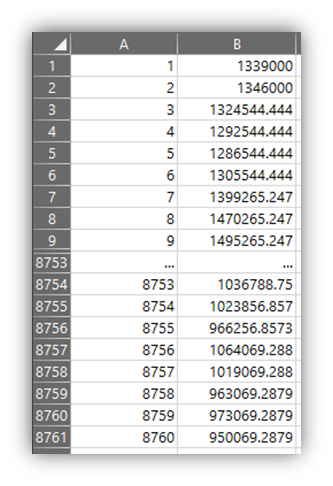
→ Select Saved
When uploading or generating a profile, you are given the option to Save the profile for future use. Using Select Saved, you can load an energy profile you have saved in the past.
Visualization of demand data
Once a demand is added and connected, a box representing the demand will be visible on the energy hub diagram. The demand profile that has been added can be downloaded as an excel file.
Profiles and Load Duration Curves
For each Energy Demand included in the scenario, hourly energy demand profiles and load duration curves can be visualized.
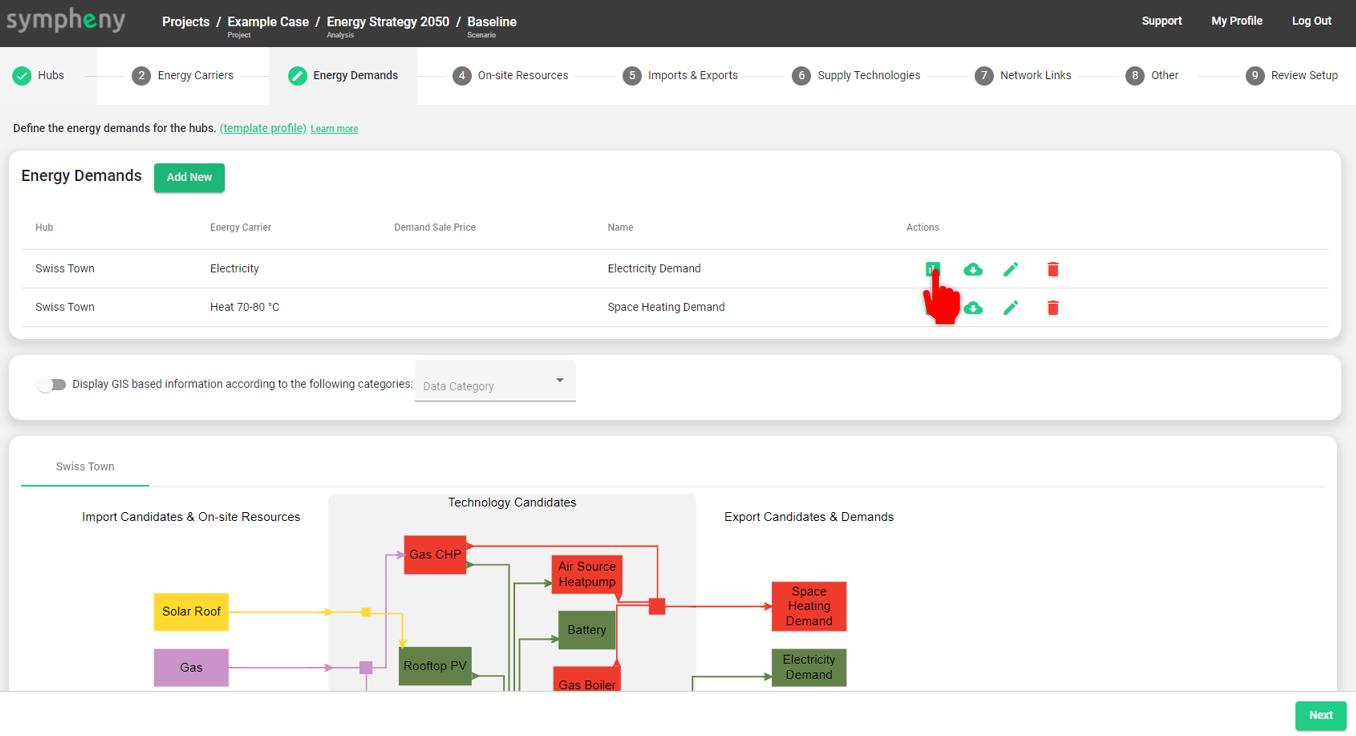
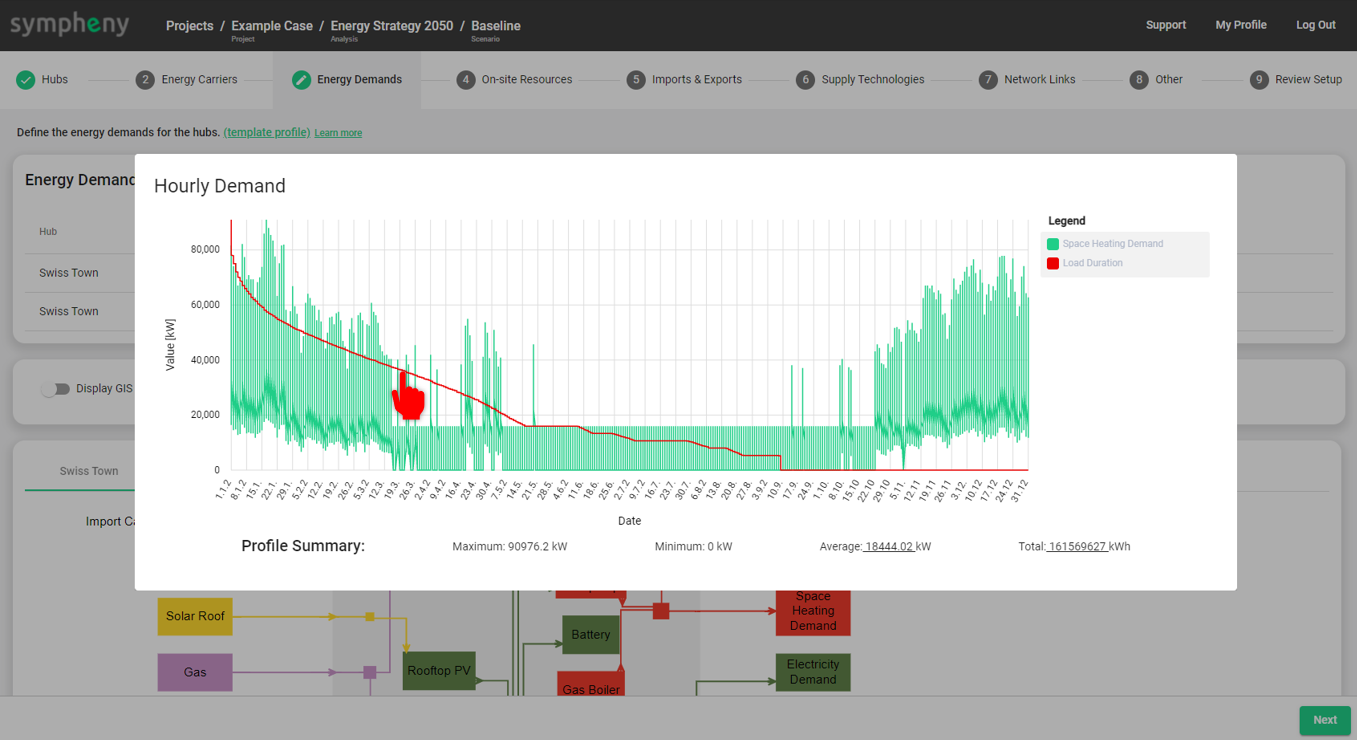
Energy Profile Peak Shaving
Turn on the toggle Energy Profile Peak Shaving to consider simultaneity in the case that your single demand profile represents multiple units. e.g. buildings, households, etc. Write in Numbers of profiles aggregated the number of different profile units aggregated represented by the single profile selected.
The input Number of profiles aggregated increases the stochastic shifting of each hourly energy demand creating a "smoothness" of the demand profile. In the new profile the average value of the sum of the profiles is maintained.
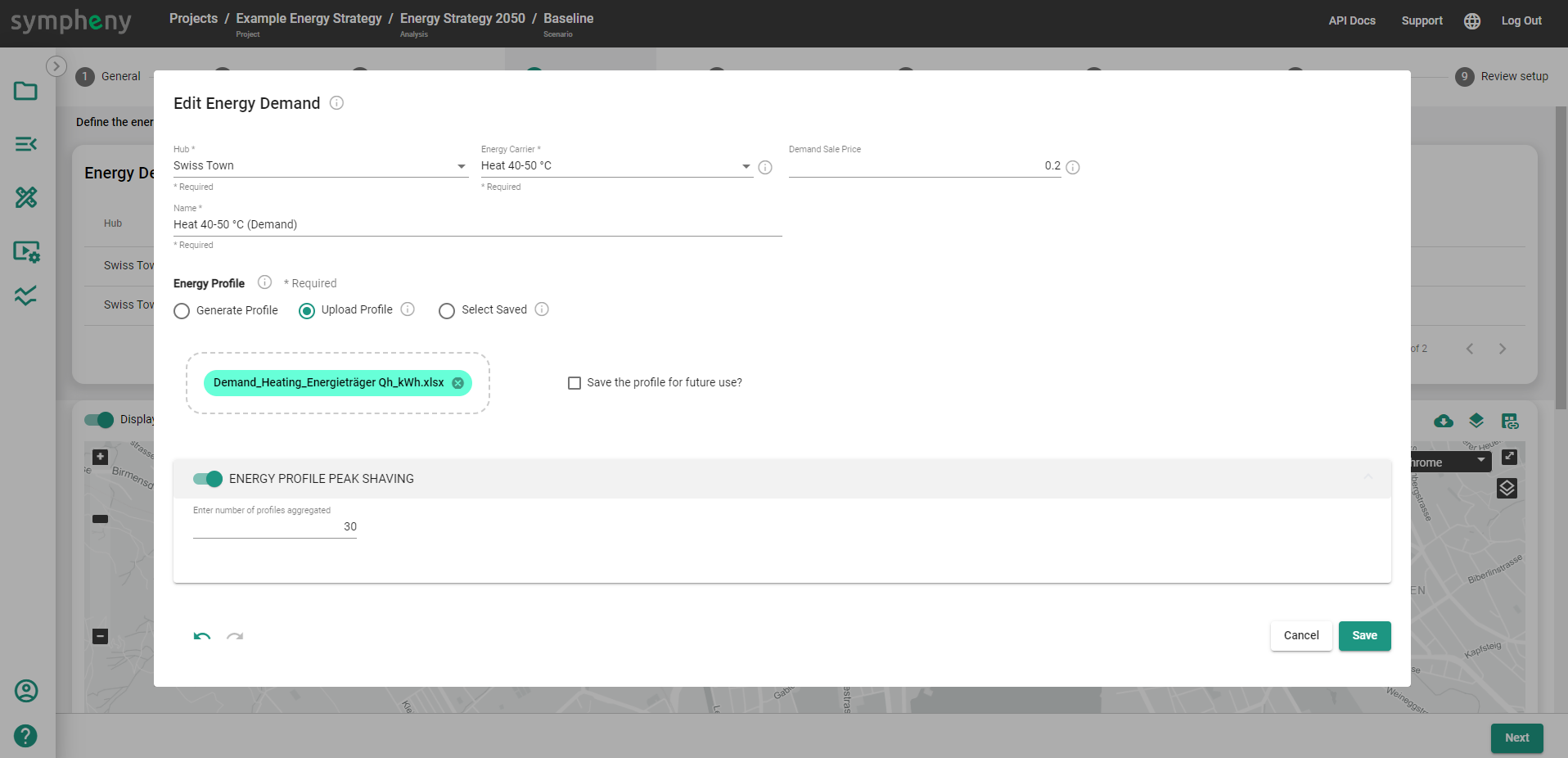
AI Clustered profiles
When executing the optimization, AI clustered profiles are created to improve the performance of the optimization. This applies to the the Original Energy Demand and Original On-site Resource profiles entered by the user. The AI clustered profiles profiles have similar load duration curve as the original profile and total annual energy and the energy peak of the profile are respected.
Based on the overall hourly energy profiles entered, a specific number of typical days are selected by the Sympheny engine. The AI clustered profiles are made out of these typical days repeated throughout the year. E.g. if 20 typical days are selected, these typical days (with their 24 hours) will be repeated throughout the year to complete the 365 days. Note that the clustering is done for all profiles at once. E.g. in a system with 2 demand profiles (Heating and Electricity), if typical day #3 represents the days of the year 5, 8, 12, 23, 36, 45 for Heating profile it also represents those for the Electricity profile
The number of typical days created depends on the Optimization Granularity set in the Review Step.
The peak of each of the Energy Carrier per Hub, the peak of each of the Energy Carriers (in all Hubs) and the peak of all the Energy Carriers aggregated is also included.
Tip: A comparison of the Original and AI clustered profiles is plotted in the Result Dashboards (plot 10c).
Alternatively, you can find the AI clustered energy demand profiles of your scenario within the output.xlsx folder, under the folder Financial Tables in the Nachfrage tab of each solution. Note that all solutions of a specific scenario has the same AI clustered Energy Demand profiles.
